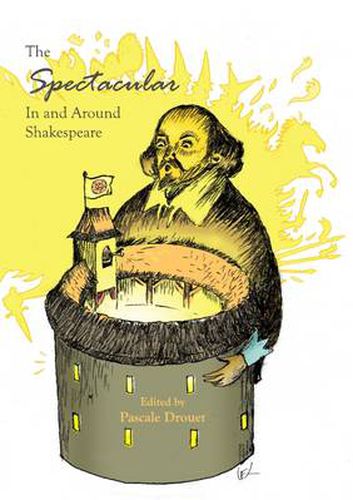Readings Newsletter
Become a Readings Member to make your shopping experience even easier.
Sign in or sign up for free!
You’re not far away from qualifying for FREE standard shipping within Australia
You’ve qualified for FREE standard shipping within Australia
The cart is loading…






This volume addresses the economy of the spectacular in and around Shakespeare’s plays, both in early modern England and in late-twentieth/twenty-first-century adaptations and appropriations. Apart from addressing issues such as (im)plausibility, tours de force arousing amazement, and excess for the sake of entertainment, it raises the question of intentionality-what is behind the spectacular? Is there always a manipulative purpose? How far-reaching are the political and ideological stakes?The contributors to this volume investigate a broad spectrum of particular phenomena: the spectacular sound effects and pyrotechnics displayed for the opening of the Globe theatre with Julius Caesar on performance; George Gascoigne’s lavish 1575 pageant commissioned by the Earl of Leicester for the queen at Kenilworth (The Princely Pleasures); the relationship between the spectacular and scientific discoveries, as well as their dialectics of appropriation; the impact of Mannerist art on The Winter’s Tale; Coriolanus’ resistance to ostentation and political shows; the anti-spectacular counter-current running through Timon of Athens; Julia Pascal’s innovative 2007 stage production of The Merchant of Venice; apocalyptic screen adaptations of turn-of-the-century Jacobean tragedies, and Richard III’s potential to be graphically interpreted in 2008 as political satire and as a danse macabre.
$9.00 standard shipping within Australia
FREE standard shipping within Australia for orders over $100.00
Express & International shipping calculated at checkout
This volume addresses the economy of the spectacular in and around Shakespeare’s plays, both in early modern England and in late-twentieth/twenty-first-century adaptations and appropriations. Apart from addressing issues such as (im)plausibility, tours de force arousing amazement, and excess for the sake of entertainment, it raises the question of intentionality-what is behind the spectacular? Is there always a manipulative purpose? How far-reaching are the political and ideological stakes?The contributors to this volume investigate a broad spectrum of particular phenomena: the spectacular sound effects and pyrotechnics displayed for the opening of the Globe theatre with Julius Caesar on performance; George Gascoigne’s lavish 1575 pageant commissioned by the Earl of Leicester for the queen at Kenilworth (The Princely Pleasures); the relationship between the spectacular and scientific discoveries, as well as their dialectics of appropriation; the impact of Mannerist art on The Winter’s Tale; Coriolanus’ resistance to ostentation and political shows; the anti-spectacular counter-current running through Timon of Athens; Julia Pascal’s innovative 2007 stage production of The Merchant of Venice; apocalyptic screen adaptations of turn-of-the-century Jacobean tragedies, and Richard III’s potential to be graphically interpreted in 2008 as political satire and as a danse macabre.